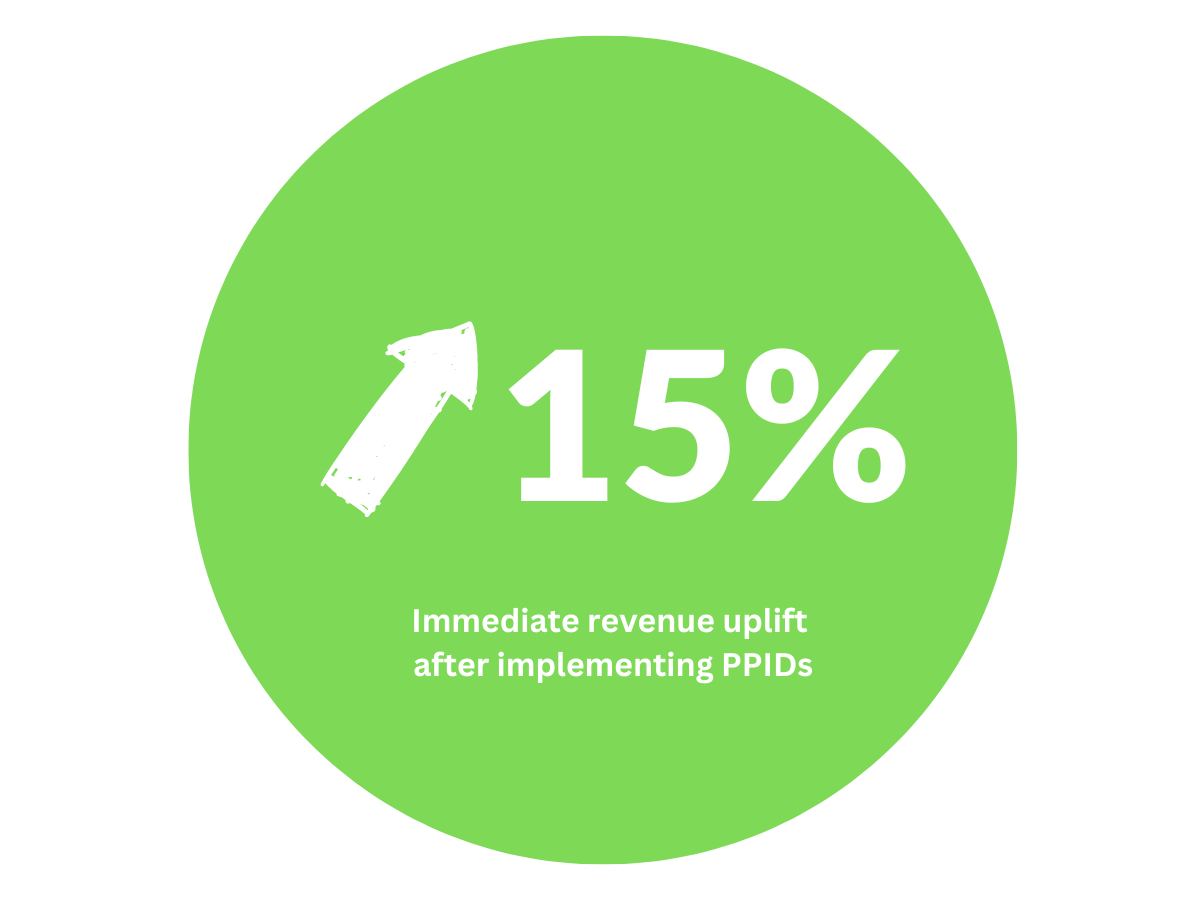As the use of third-party cookies becomes increasingly restricted, alternative identifiers are being sought to provide the same level of personalized user experiences and data collection. In this article we will take a closer look at Publisher Provided Identifiers, PPIDs from Google - unique identifiers assigned to an individual that allow websites and apps to recognize and personalize both ads and the user experience.
If you're looking for a good starting point in your first-party data strategy, you are in the right place. We will walk you through:
- What's at stake for publishers
- What features publishers will lose after the 3rd-party cookies deprecation
- How publishers are using first-party identifiers today
- What are PPIDs and how they can replace third-party cookies in the first place
- How can PPIDs help you make more money out of programmatic monetization right now
- How to start using PPIDs and what you should know before
The costs of inaction: Why you should act now
According to a report made by McKinsey, the projected absolute loss in revenue can reach 10 Billion dollars in the U.S. alone. Publishers dependent on their personalized ads revenue will be affected the most. If your data-driven ad revenue reaches 80% of your total revenue, beware of the transformation coming.

For publishers, lost revenue will mean less money to create new content, run their businesses, and pay their employees.
Immediate revenue uplift (15%) reported by a Spanish-language media conglomerate Grupo Prisa after implementing PPIDs, compared to campaigns running without any other signals present (including 3rd party cookies)

The impact of losing the benefits of third-party cookies
Third-party cookies are still widely used in online advertising to track users' behavior across multiple websites and collect data on their interests, preferences, and online activities. This data is used to build user profiles and create targeted advertising campaigns. Advertisers can use third-party cookies to serve ads to specific audiences and track the effectiveness of their campaigns.. Ad networks and programmatic advertising platforms rely on third-party cookies to facilitate ad serving and optimization.
Although third-party cookies are currently providing several benefits for ad-revenue, they will be deprecated in mid-2024. These benefits include:
- cross-site tracking of users
- creating a personalized ad experience based on user interests on advertisers' platforms
- frequency capping for direct campaigns
- leveraging the value of a visitor observed across the internet on your website
In a nutshell, in the world of third-party cookies, most publishers enjoyed the luxury of not knowing what was happening with user data. However, in the first-party world, publishers need to be more educated. The value of data will be partially transferred from platforms back to the hands of publishers. However, without the necessary expertise on the publisher's side, losing the simplicity of third-party cookies may have negative effects.
Your options to track users and provide personalized experience in a post-cookie world
Tracking users and providing personalized experiences in a post-cookie world can be challenging. In this section,you will find tech solution definitions that are not tied to any specific provider. If you have your own developers, it's important that they have a good understanding of these solutions before diving into PPIDs. Or, you can reach out to FatChilli for help.
First-party cookies
First-party cookies are set by the website the user is visiting and are not shared with other domains. Unlike third-party cookies, first-party cookies are less likely to be blocked by browsers and can still be used for personalization and data collection. However, first-party cookies can only be set for the domain the user is visiting, limiting their ability to be used for cross-site tracking and targeted advertising.
Device Fingerprinting
This involves collecting information about the user's device, such as the type of device, operating system, screen resolution, and installed fonts, and using this information to create a unique identifier. Device fingerprinting can be used to track users across multiple visits to a website, but its accuracy can be impacted by the user's device settings and the availability of information.
User-based tracking
This involves asking users to log in to websites and apps and tracking their behavior while they are logged in. User-based tracking is less intrusive than device fingerprinting or third-party cookies and can still provide valuable insights into user behavior. However, it relies on users being willing to log in and may be less accurate for users who log in from multiple devices.
PPIDs as the future of user tracking in a post-cookie world
PPIDs were originally designed for better user experience by enabling visitors to access their personalized content and settings on any device. This means that users can seamlessly switch between their desktop computer, tablet, and smartphone, and their preferences and saved articles will be available on each device. This leads to increased engagement and customer loyalty, as users are more likely to return to a news site that offers a consistent and personalized experience.
PPID is a hashed identifier provided by the publisher. These identifiers flow to Google Ad Manager in a private, safe way. The common misconception is that PPIDs are identifiers associated with the user login on your website. PPIDs can be associated not only with identity of the logged-in user, but also with any type of user behavior on your website, such as:
- Interest in the specific type of content (e.g. reading specified number of articles from sports category during a certain time period)
- Time spent consuming video content
- Consumer preference based on the quiz or survey reader submitted
- and many more
Where can PPIDs replace features of third-party cookies and what are their limitations?
PPIDs are a way of retaining performance in a cookieless world. Even today, publishers who implemented PPIDs report an increased revenue by 15% from programmatic open auction on those browsers which limit third-party cookies, such as Safari or Firefox.
In the world of cookieless advertising PPIDs will:
- help you retain programmatic ad revenue,
- allow frequency capping features for your directly sold campaigns
- allow leveraging personalized ad experiences for your audience segments created from PPIDs collected
One of the frequently asked questions among publishers is: Will this be allowed across different sites? The answer is simple. No.
Advertisers will not be able to merge 2 identifiers from 2 separate entities (domain no.1 and domain no.2). However, from signals passed to bidstream, they will be able to collect similar interests from multiple properties and target them accordingly. From the individual user perspective, privacy has to be guaranteed. It is the main reason for the emergence of first-party identifiers in the new era of online advertising.
Frequently asked questions about PPIDs
Will PPIDs be used for cross-site tracking and personalization?
No. See the highlighted argumentation in the paragraph above.
Are PPIDs a solution for cookieless monetization?
The word cookieless is often used in connection with the sunset of the 3rd-party cookies. PPID is still a first-party ID, whose purpose is to serve personalized content or ads. However, it relies on first-party data, so the answer is yes. If you are looking for a way to monetize your ID-less (or cookieless) traffic, PPIDs will help you reach better results.
Will your DMP provider or Google Ad Manager gather any personal information about your users?
No. Privacy is the main feature of PPIDs and similar identifiers. Data management platforms should not gather any personal information and each identifier pushed into the platform should be securely hashed. This hashing has to be done on the publisher's side, therefore you are in control of securing your visitors' privacy.
How are PPIDs generated?
PPIDs are typically generated through a combination of unique device information, browser information, and user-specified data. You can also see the official Ad Manager documentation for implementing PPIDs.
Are PPIDs secure?
The security of PPIDs depends on the implementation and the security measures used by the company generating them. It is important to follow best practices for data security and privacy to protect the information associated with PPIDs.
Can users opt-out of PPIDs?
Yes, users can opt-out of PPIDs by disabling cookies or other tracking technologies in their browser settings or by adjusting the privacy settings in their device.
How can you implement PPIDs?
For more info contact us at [email protected]
To sum up, while PPIDs may not be directly relevant to your business model if you don't have ads on your website, it is still important to be aware of new privacy-preserving technologies like this. By doing so, you can stay compliant with privacy regulations, improve your data analytics capabilities, and future-proof your website.


 English
English 


